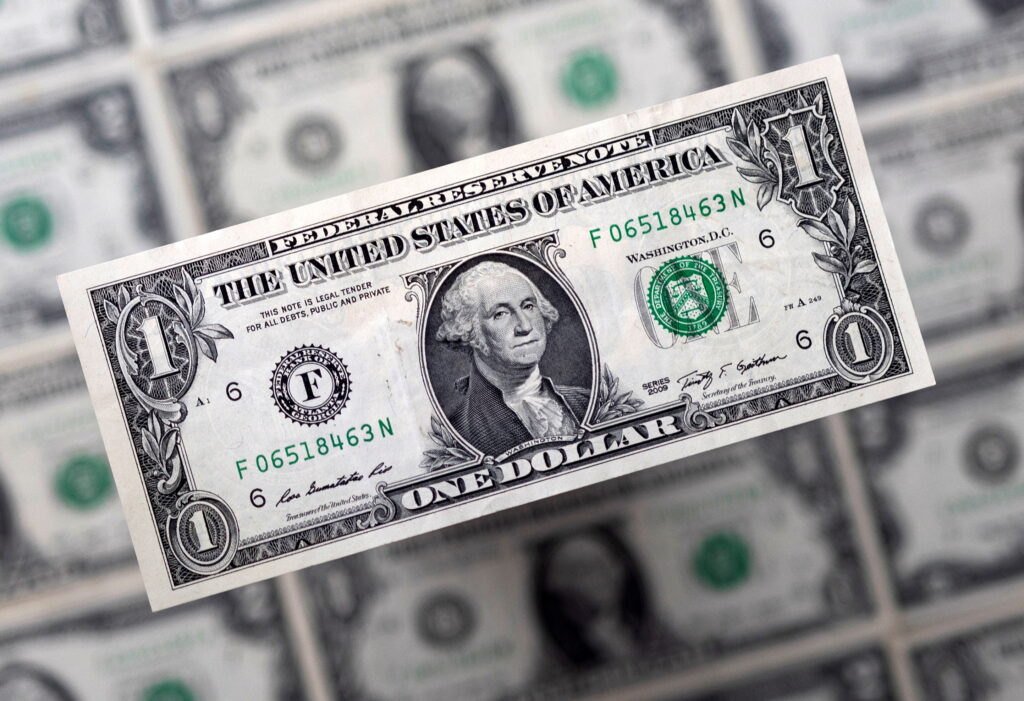
USA Dollar In today’s ever-changing financial landscape, keeping a close eye on the dollar’s performance is a crucial aspect of understanding the global economic trends. In this article, we delve into the recent developments that have led to the dollar’s six straight losses, resulting in it hitting a two-week low. These losses can be attributed to bearish remarks made by Federal Reserve officials, which have cast a shadow over the possibility of a 0.25% interest rate hike by the end of the year. Join us as we explore this intriguing situation, which leaves investors eagerly anticipating the release of the Federal Reserve’s meeting minutes and US producer prices data for insights into future monetary policies.
USA Dollar Index: A Downward Spiral
The USA Dollar index, a key indicator of the dollar’s strength against a basket of major currencies, has been on a downward spiral. It fell over 0.1% to 105.61, marking the lowest point since September 29. This decline follows a series of losses, with the dollar closing down 0.3% yesterday, making it the fifth consecutive daily loss—a streak not seen since July. The implications of this trend are significant for both domestic and international markets.
Fed Remarks and Their Impact on USA Dollar
The recent comments from Federal Reserve officials have been pivotal in shaping the dollar’s trajectory. Dallas Fed President Lorry Logan emphasized the importance of maintaining tight monetary conditions until inflation is brought back to 2%. He also highlighted the strength of the labor sector, indicating a cautious approach to interest rate changes.
On a similar note, Fed Deputy Chair Philip Jefferson expressed the need for prudence due to the recent surge in treasury yields. His words underscored the careful considerations the Fed must make in the current economic climate.
Minneapolis Fed President Neil Kashkari’s remarks added to the uncertainty. He warned that higher yields could compel the Fed to reduce its monetary tightening interventions, raising questions about the central bank’s future moves.
San Francisco Fed President Mary Dale’s perspective is also worth noting. She pointed out that tighter financial conditions might absolve the Fed from making more deliberate decisions, leaving room for interpretation regarding the Fed’s role in the market.
US Rates in Flux
In light of these remarks, the odds of a 0.25% Fed interest rate hike at the November meeting currently stand at a mere 15%. Furthermore, the odds of such a hike in December have dropped to 29%. These statistics reflect the considerable uncertainty surrounding the Fed’s decision-making process and the future of interest rates in the United States.
Fresh Pricing and the Wait for Clarity
Amidst this financial turbulence, investors are anxiously awaiting the release of crucial US producer prices data, expected later today. This data will provide valuable insights into the current state of inflation and its potential impact on the economy.
Additionally, the Federal Reserve is set to release the minutes of its last September policy meeting, during which policymakers chose to keep interest rates unchanged. These minutes will offer further clues about the Fed’s stance and the factors that have influenced their recent decisions.
In conclusion, the dollar’s recent performance, influenced by bearish comments from Fed officials, has created an air of uncertainty in financial markets. The anticipation of Fed meeting minutes and producer prices data adds to the intrigue, as investors search for clarity regarding future monetary policies. It’s a situation that underscores the importance of keeping a close eye on the dollar and its global implications.
FAQs
-
Why is the dollar’s performance significant in the financial world?
The dollar’s performance is crucial because it has far-reaching implications on global trade, investment, and economic stability. It serves as a barometer for the health of the US economy and influences international markets. -
What is the dollar index, and why is it important?
The dollar index measures the strength of the US dollar against other major currencies. It provides insights into the dollar’s performance on the international stage and is closely monitored by investors and policymakers. -
How do Federal Reserve remarks affect the dollar’s value?
Comments from Federal Reserve officials can impact the dollar by shaping expectations regarding interest rates and monetary policy. Positive remarks may strengthen the dollar, while bearish comments can weaken it. -
What is the significance of the US producer prices data?
US producer prices data offers insights into inflation trends, which are critical for understanding the overall health of the economy. It helps businesses and policymakers make informed decisions. -
Why are the Federal Reserve meeting minutes important?
The meeting minutes provide transparency into the central bank’s discussions and decisions. They offer clues about the Fed’s future actions, interest rate changes, and economic outlook.
